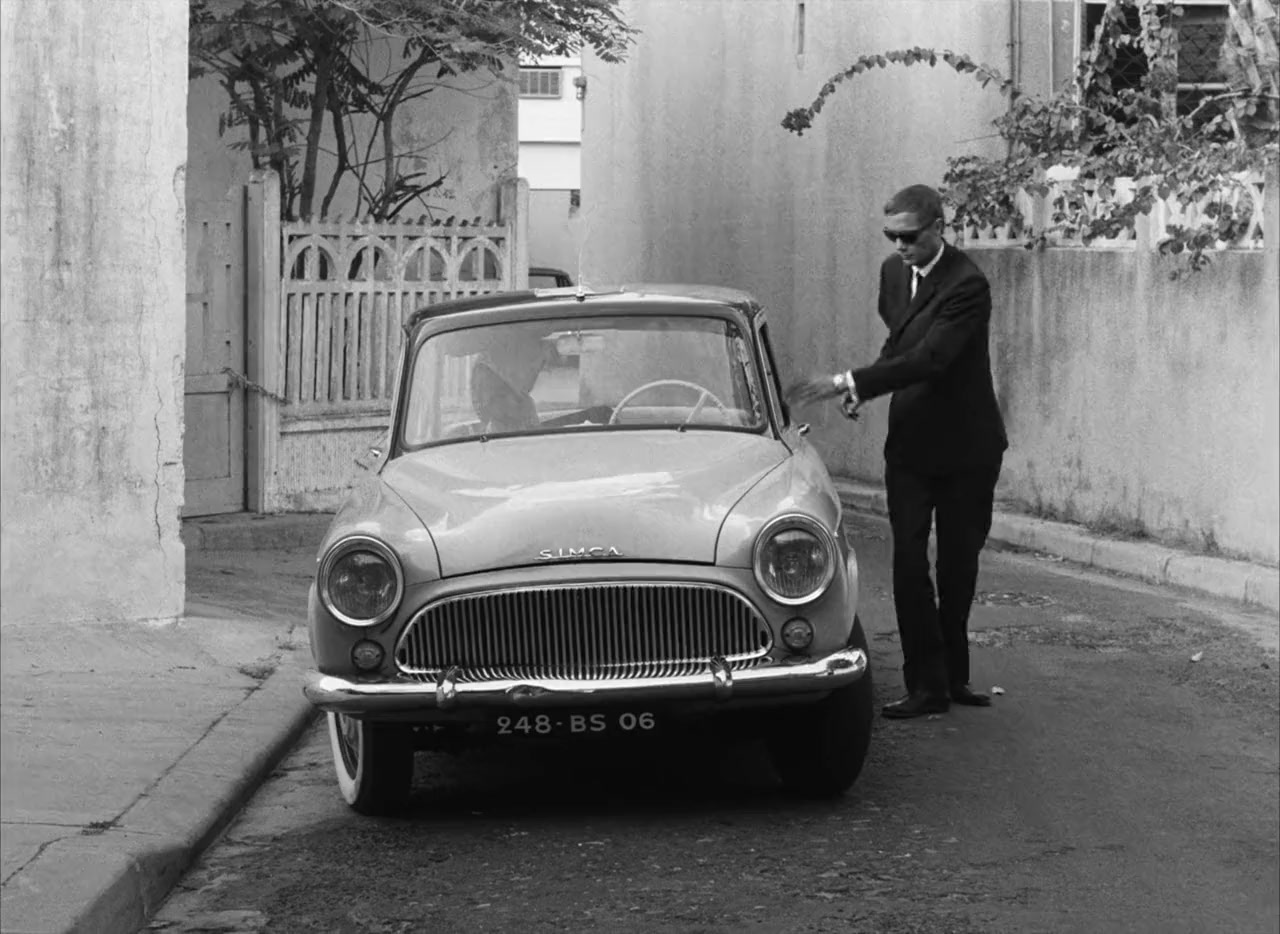
- Year: 1966
- Released: 17 Mar 1966
- Country: Senegal, France
- Adwords: 2 wins
- IMDb: https://www.imdb.com/title/tt0060758/
- Rotten Tomatoes: https://www.rottentomatoes.com/m/black_girl
- Metacritics:
- Available in: 720p, 1080p,
- Language: French
- MPA Rating: Not Rated
- Genre: Drama
- Runtime: 65 min
- Writer: Ousmane Sembene
- Director: Ousmane Sembene
- Cast: Mbissine Thérèse Diop, Anne-Marie Jelinek, Robert Fontaine
- Keywords: southern france, french riviera, racism, black and white, maid, discrimination,
 | 7.4/10 |
 | 72/100 |
 | 94% – Critics |
 | 76% – Audience |
Black Girl Storyline
A Senegalese woman is eager to find a better life abroad. She takes a job as a governess for a French family, but finds her duties reduced to those of a maid after the family moves from Dakar to the south of France. In her new country, the woman is constantly made aware of her race and mistreated by her employers. Her hope for better times turns to disillusionment and she falls into isolation and despair. The harsh treatment leads her to consider suicide the only way out.—Fiona Kelleghan
Black Girl Photos



Black Girl Torrents Download
| 720p | bluray | 546.87 MB | magnet:?xt=urn:btih:CE0EDAD1F3E1DBA728CEB922B51D5EA59BA7EB9C | |
| 1080p | bluray | 1016.35 MB | magnet:?xt=urn:btih:37CE38240748AA47294945CDF57D0D225BB6112F |
Black Girl Subtitles Download
| Arabic | subtitle Black.Girl.1966.CRITERION.1080p.BluRay.x264.AAC- | |
| English | subtitle Black.Girl.1966.1080p.Bluray.UK.AVC.Remux.HDCLUB | |
| Korean | subtitle Black Girl (1966) Criterion (1080p BluRay x265 r00t) |
Black Girl Movie Reviews
Colonialism Unmasked
“La Noire de…”–better translated as “The Black Girl/Woman de…,” retaining the French preposition with its ambiguous connotations, either meaning “of” or “from” or “belonging to”–is credited as the first sub-Saharan African feature film to receive international acclaim. Its author, Sembène Ousmane is likewise considered the “father of African cinema.” Indeed, Senegal had only recently declared independence from French colonial rule in 1960, and, reportedly, before that Africans in French colonies were prohibited from making their own movies. One assumes this ban existed because the authorities feared such a thoroughly anti-colonialist picture being presented as in “Black Girl” and even more so that it be artfully composed. For, despite clocking in at under an hour (although originally a bit longer), Ousmane’s film tenders a taut thesis, subtly adorned in art and while still managing a shamefully shocking end and strikingly symbolic epilogue.
If this were simply postcolonial social commentary, as admirable as that message may be, it would be easy to write off “Black Girl,” which is what the French Film Bureau did in rejecting to produce it (although, they later purchased the rights to (or not to) distribute it). It’s the crafting of the message that makes this a great film, though. I especially love the use of the mask here–a piece of African art much like the film itself that serves as a source of contention for its control, within and without the film. At first, while in Dakar, Diouana, the protagonist, offers the mask as a gift to her employers, for which they place it beside other pieces of African art decorating their villa. Back in their high-rise apartment in France, however, the mask hangs alone on the white family’s wall, with the only apparent other they take back with them from Senegal to France being Diouana. When the boy who originally possessed the mask regains it, he shadows one of Diouana’s employers, the man, as if haunting him with the history of colonialism while simultaneously deporting him from a newly free nation.
The precision of the black-and-white cinematography is worth remarking upon here, too. With a minimalist aesthetic reflecting its low budget and the influence of the French New Wave, it may be easy to miss how well the photography reinforces the social commentary. Jonathan Rosenbaum (see his book, “Movies as Politics”), for one, reiterates what another film critic, Lieve Spass, says regarding the black-and-white dichotomy of the picture in everything from the dots on Diouana’s dress, the food they consume (white rice and milk, black coffee and “Black and White” whisky), to, most dramatically, Diouana in the white bathtub. There’s also the dark mask on the apartment’s white wall, the black void Diouana stares out at from that apartment, in addition to the obvious pigmentation. When the white French woman looks over a crowd of black women waiting for work as maids, the visual connotation to a slave market isn’t lost. Nor is it when Diouana is mistreated by those she serves in France: the shrewish madame treating her as inferior, the mostly indifferent monsieur, kissed by a stranger who doesn’t bother with a request or introduction after remarking that he’s never kissed a black woman before, overhearing another guest suppose that Diouana instinctually, “like an animal,” understands commands in the French language (one may be forgiven for thinking it was the two centuries of French colonial rule that explains the people of Senegal knowing French–heck, the Normans only controlled England for half a century a millennium ago, and there remain thousands of French cognates in the English language to this day, but I digress).
It rather goes without saying that this is an economical picture, although, again reportedly, originally the film included a color sequence. In addition to the photography, however, there’s the sparsity of story and dialogue, which I admire, notwithstanding that some Westerners seem to be put off by it. Regardless, relying on Diouana’s internal narration is effective in focusing the narrative and getting the point across–that the dream and promises that led her to France becomes alienated from her confined reality, which she compares to being treated like a prisoner and slave, as others cast her as a racial, supposedly inferior “other.” Her illiteracy along with her general muteness compounds her alienation, as wrenchingly detailed in the scene involving a letter supposedly from her mother. The general English translation of the title is rather suiting in this regard, to simply label her and the film as the “Black Girl,” to not even question from whence she belongs–her identity simply stated and assumed, as her employers and the colonizers would have it. The film returns her voice, if only for the spectator, and likewise the identity of postcolonial Africa.
First film made by a Black African director
I am very glad I finally saw “Black Girl.” I missed seeing it when it was first released in the U. S., and now–36 years after it was produced–the film found its way to Upstate New York (Rochester Labor Film Festival).
We cannot judge this movie in 2002 terms–by those terms it is technically crude, and too short (only 65 minutes). The print shown in Rochester was of poor quality–especially just before and after reel changes.
Despite all these hurdles, I found “Black Girl” compelling and disturbing. The basic themes are the conflict and contrasts between White and Black, European and African, rich and poor, literate and non-literate. The contrasts are not subtle, but neither are they violent or brutal. There is no physical violence, but rather emotional and psychological violence.
Sembene–who had to learn his cinema craft in Russia because opportunities were denied him by the French–is a master. A master working without star actors and without state-of-the-art technology can still produce a masterpiece!
While the film is far from perfect, it is very important…
This Senegalese film is very important. It’s a film made by black filmmakers and espouses a very strong black nationalist attitude. Because of this, it must have really struck a chord for African film patrons.
“Black Girl” is a film about a young woman from Senegal that has taken a job working for a white French family. She thinks she was hired to take care of the children but the woman of the house sees Diouana as a personal servant and soon this young lady finds herself working as a maid–and an under-appreciated on at that. Part of the problem is a communication barrier between the white family and Diouana as often neither quite understands the other’s expectations. Part of it is the wife is rather cold and sees the Africans as being dumb and beneath her. Where does all this end up? Well, in a sad way it’s a giant ‘I’m not gonna take it any more’ from Diouana–much like the attitude through the continent towards their colonial or former colonial masters.
While this is a very important film and it would be great to use in a class about African cinema or world history, technically speaking it has a few small shortcomings. It’s not the smoothest or highest quality production–but considering its humble roots, I can easily look past that and it’s still worth seeing if you are patient and can appreciate the context for when it was made (such as the Patrice Lumumba banner briefly seen in a tiny portion of the film).



